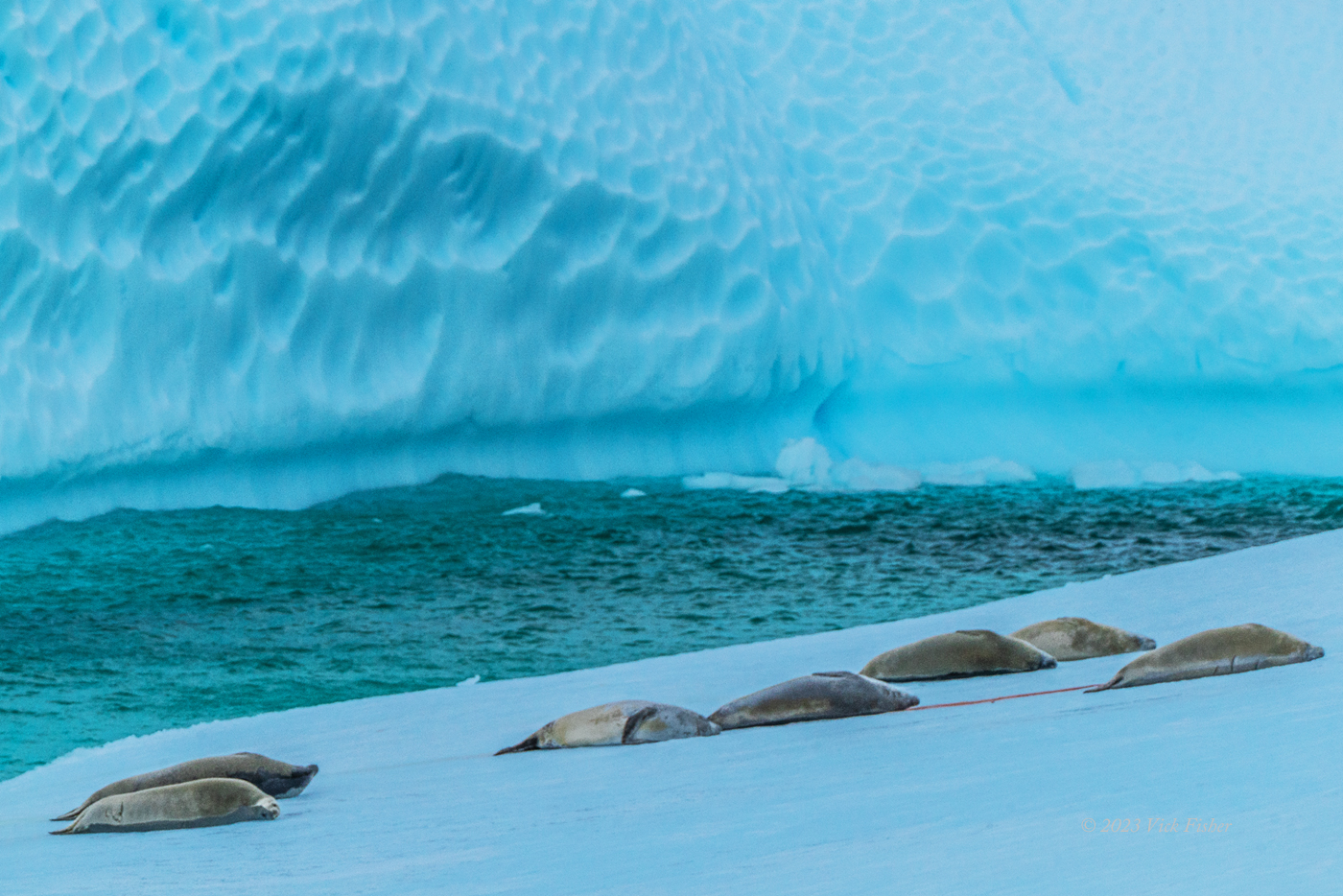I've wanted to visit Antarctica ever since watching TV documentaries about it when I was a child. Traveling there as a tourist used to be impossible. Then, a few scientific ships built to resist collisions with iceberg fragments were converted for touring. I wanted to go in those days, but it never happened. I wanted to feel like an explorer going into uncharted territory, but it's too late for that now. We are living at the dawn of mass tourism to Antarctica. Several companies have recently built luxurious ships capable of handling the ice and weather there. We put down our deposit in the month of February 2020. A couple of COVID-infested years later, we were finally able to take the trip we'd planned for so long.
The World Explorer, operated by Quark Expeditions, can accommodate about 170 passengers and has about 45 crew members, including captain, operations staff, expedition guides, dining room and "hotel" workers, and more. This is an expedition ship, as opposed to a cruise ship, which means it carries a small enough number of passengers to allow for landings.
Antarctica is a continent larger than the continental United States that is not owned by any country or individual. The Antarctic Treaty, first agreed in December 1959, was the culmination about fifteen years of arguments among great power nations after WWII. The treaty is an agreement among a large group of nations, including Chile and Argentina, which are the closest countries to Antarctica, that no country should claim any part of the continent as territory.
Since we had heard the weather is often so bad that it's unsafe to try to get off the ship, we decided on a longer trip that crossed the Antarctic Circle (the latitude below which there are sometimes 24-hour days and nights). This would give us more days where we might have a chance to hop on the Zodiacs.
From the town of Ushuaia, at the southern tip of South America, ships take two full days to cross the Drake Passage. This area is the only latitude on earth where wind and sea can circle the entire planet with no interruption by land. This results in frequent high seas. We had moderate seas during the crossing, with the ship rolling enough to make walking a little challenging, but nothing violent.
Despite the reasonableness of the Drake Passage crossing, the captain informed us that a powerful storm was chasing us. On the third day we arrived south of the Antarctic Circle. It was a relief to see land for the first time in three days. During the day, the wind was between forty and sixty miles per hour. We had some good views from the awesome wraparound interior/exterior observation deck of the ship.
During dinner, the wind continued to increase. The ship was rocking so much that you had to put your hands out to the sides to grab the walls or rails in case you stumbled. At dinner, we heard a few dishes slide off tables and smash on the floor. After dinner, the sustained winds were over eighty miles per hour, and the ship would lean far to one side and then slowly roll the other way. Our ship was further south than any other ship by quite a distance, so our group was truly alone. No rescue nearby if something went wrong. I started to wonder if a storm like this was normal. Here's a video taken from inside our room, looking out from our balcony.
Click here to see high quality video: Antarctica Storm video
The storm turned out severe enough to force the captain to stay at the helm all night. The ship's instruments recorded gusts of 130 MPH. We found out this was the worst storm he, or any of our expedition guides, had ever experienced. So, it really was as bad as I'd started to wonder the night before! Glad we didn't freeze in Antarctic waters!
The next day, the winds were still a sustained thirty-plus MPH, so we couldn't get off the ship. Instead, we headed north, vainly hoping for better weather. But, at least we could see the continent. As we made our way north, we started to see our first full-fledged icebergs. Notice the spray from the huge wave breaking on the iceberg.
This one really looks like a swirly ice cream cone, especially the top. These shelves form as the iceberg rests in the sea and melts and turns, and the water action melts one area until it turns again. This thing is probably a hundred feet high. It was towering over us. And of course, it may be as much as nine hundred feet below the surface. Many like this are too large to float, so they rest on the bottom until they can shrink.
This is the edge of a glacier, and the bluer, caved in area is where one or a few massive icebergs calved off into the sea.
So many textures on the surface of this huge iceberg, caused by a combination of fracturing, sea water, sun, wind, and melting.
Click here for the third set of Antarctica photos, with more stunning icebergs and glaciers.
Click here for the the fourth set - penguins, penguins, penguins!






















No comments:
Post a Comment